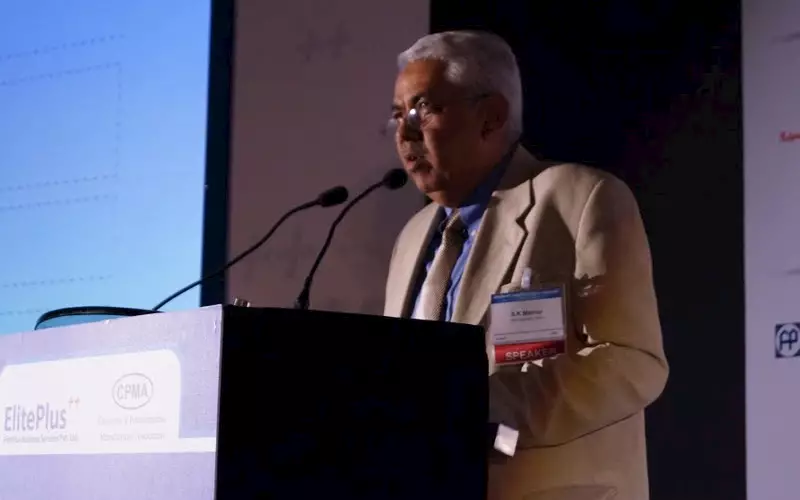India to grow from 5% to 15% of the global packaging market
The Chemicals and Petrochemicals Manufacturers' Association (CPMA) and Elite Plus Business Services (EPBS) organised a conference about Speciality Films and Flexible Packaging Global Conference 2012 on 11 September (Tuesday) at the Grand Hyatt, Mumbai.
25 Sep 2012 | By Rushikesh Aravkar
PrintWeek India's continued reportage of the conference ...
Developments in lamination and coating
Rakesh Shah, managing director, Windmöller & Hölscher India, moderated the session 'developments in lamination and coating'. It included presentations on extrusion coatings, adhesives, speciality films etc.
Dr Hassan Helmy, executive vice president, Davis Standard highlighted the converting systems from Davis Standard in depth. According to Helmy, the recent innovations in the extrusion process have been the use of biodegradable resins, high-speed extrusion, high cooling media for higher cooling efficiency and better chill roll release.
SK Mathur, chief executive officer, Max Speciality Films explained the speciality film applications and the developments in BOPP films. Mathur said, “Development of speciality films led continual innovations enabling flexible packaging to grow and adapt to the needs of products around the globe. The technological drivers for the development of speciality films are barrier enhancements; sophisticated processing technology; additives and coatings; and process optimisation. “In India, demand for speciality films is driven by large growth in flexible packaging, low per capita, consumer tastes, retail growth, branding, demography etc. Speciality films allow freedom for designers to offer attractive choices to the consumers,” concluded Mathur.
The packaging industry is changing and the major trends are lifestyle, sustainability, regulation and value-for-money according to Ashish Pradhan, business director-AIL India, Henkel Adhesives Technologies. Pradhan highlighted Henkel’s new laminating adhesives Liofol LA 3643-21 and Hardener LA 6063-21. “Both systems are designed for foil laminates with excellent product resistance. Especially on acidic filling goods,” said Pradhan. Henkel is working to develop the concept of reducing the complexity in multi-layer barrier films by incorporating barrier in adhesive and thereby decreasing the number of layers.
Francesco Peccetti of Gruppo Colines discussed the changing market needs, market scenario, applications, and extrusion equipment of cast films manufacturing technology for hygiene and barrier film. Food accounts to 38% of the Indian flexible packaging market and the food-processing sector has grown at a yearly average rate of 20% in the last five year. Peccetti said, “The key segments of packaging in India are fresh and frozen foods; pharmaceutical; snacks; confectionery; and dairy products. India accounts for 5% of the global packaging market with an expected growth of 15% per year until 2015.” Laminates with barrier properties without use of foils and aluminium will grow in the future.
The hygienic barrier film includes sanitary protection, incontinence, diapers etc. Peccetti said, “The market value of sanitary protection in 2010 was Rs 10 billion, and is expected to grow by about 10% in the next three years.”
Click here if you want to read about the sessions on
Consumer packaged goods – industry overview and developments in materials











 See All
See All